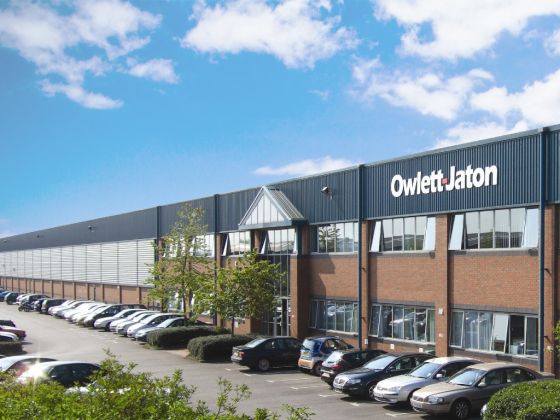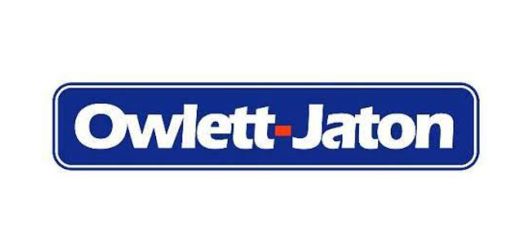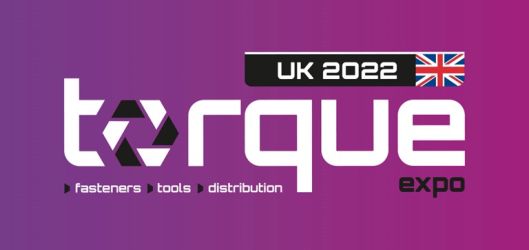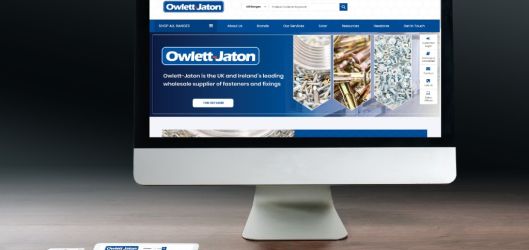
SMOOTHING OUT DEMAND SPIKES IN EXCEPTIONAL TIMES: It’s been quite the 15 months for the fastener supply chain. For those trading between the UK and EU there’s been Brexit to contend with, as well as the small matter of Covid and its game-changing effects on the supply chain. Torque Magazine speaks with Ian Doherty, CEO of the UK’s largest fixing and fastener wholesaler, Owlett-Jaton, to assess the state of the market…
It has been a hugely disrupted 12 months for fastener distribution and beyond. Do you think that it has highlighted the value of wholesalers and importers in the fastener supply chain? For example in terms of maintaining a consistent supply in a highly disruptive period?
I think it has. We have the ability to smooth out demand spikes in the broader supply chain, largely because of the levels of stock that we carry. Industry would have struggled without the wholesalers and our ability to hold broad, deep stocks.
There were a whole bunch of factors in the last 12 months, many of which you can lay at the door of Covid. You could argue port congestion was largely a Covid creation; It reduced capacity and then we had all this PPE coming in, although we know there were some other factors, including Felixstowe Port implementing a new IT system.
There were massive swings in demand last year. After the Prime Minister made his announcement of lockdown on 23 March last year, the UK completely shut down, but by July in our sector we found that demand had largely come back to normal. And then there were people frantically trying to refill supply chains. Undoubtedly, we were able to meet some of that exceptional demand and I like to think we added value. If everyone had been relying on their own stocks then I think it would have been much worse. Any small importers reacting to the lockdown by cancelling orders found it very difficult to refill the supply chain.
Product availability seems to be the greatest challenge right now, is that fair to say?
Yes, it is. That is very firmly a Covid impact. I don’t think we were unusual in that we spent 24 March looking at strategic scenarios; We questioned how long will this downturn go on? What happens if business only recovers to 80% or 90%? The first lockdown and subsequent lockdowns have been quite different. That first lockdown saw everyone trying to work out how to run a business with this new set of constraints. Construction sites virtually shut, we saw the major national
builders’ merchants shut and we saw sales fall off a cliff at the end of March. They recovered.
If, on 24 March, we had said things will be back to normal by summer then we would have been advised to have a lie down in a dark room! Orders were cut and people eventually tried to replace them and we were reasonably successful in replacing orders as demand surged. On top of that there are the port congestion issues and these have been running almost eight months. Then we had the shipping issues towards the end of Q4, which are still an issue. We have had many incidents of goods waiting for six weeks to be shipped thanks to container availability and shipping availability.
Things were improving, and even allowing for the hiatus caused by Lunar New Year we were seeing stock and availability re‐building. Then the Ever Given decided to park sideways in the Suez Canal! This has really thrown a spanner in the works. There is the immediate impact of ships being delayed whilst the Ever Given was freed and the backlog cleared, this then knocks on into port capacity as a surge of boats arrive – more congestion, more delays. At the same time ships returning to the Far East were also held up, so we are seeing return sailings from the Far East cancelled.
We have a great deal of product which has been produced, container availability has improved, but now there is a shipping capacity shortage and with that price increases for freight.
Before the Ever Given fiasco I would have said I was reasonably confident that availability would continue to improve and by Q3 might even have returned to normal levels. However, this latest disruption will take many months to work its way out of the system and I now believe we will see availability as a challenge for most of 2021.
A lack of HGV drivers has been an issue, but maybe not significant in the grand scheme of things?
There is a driver shortage and you need to book transport well in advance. This becomes complex when you get a boat that has changed its schedule and you then have to try and get a driver for the new date… It is all part of the same mix of disruption in the supply chain. That is one factor I lay at the door of Brexit rather than Covid, due largely to reduced drivers from Europe. There was a shortage before and this really hasn’t helped.
We finally ‘got Brexit done’. However, the deal was fairly last minute, with much uncertainty until quite recently. Presumably now there is clarity for importers?
Not everything is finalised! You said there was a lack of clarity, but we had assumed that we would have third country status, so we prepared for that regarding imports from Europe. A lot of the product we might have been bringing in from Europe wasn’t necessarily manufactured there, so country of origin has been an important consideration.
We prepared for full customs declarations and when the deal came out, it was as we thought. We assumed there would be additional administration required and there would be delays and that is very much what we saw. We assumed the worst case and then it came along!
Owlett-Jaton set up a subsidiary in Ireland to mitigate the possible problems around Brexit for your Irish customers. Has that decision proved worthwhile already, or will it be a longer-term success?
We haven’t actually used our Irish subsidiary. We’ve always been focused on making it as easy for our Irish customers to buy from us as it was pre‐Brexit. We found a way where we could offer that level of customer service, which has been a lot of work at our end, but has proven for our customers to be a much simpler answer.
Lead times to Ireland are now longer as the extra administration takes time. Historically we could deliver in as little as 24 hours, now it is at least 48 or 72. Beforehand, you could drive a truck up to the border. Now you have to get a pre-boarding notification and a whole bunch of administration done before the truck gets to the port. It works, but it adds time and that is slightly frustrating.
So, is this another area where wholesalers and importers have stepped in to try and keep things consistent for customers?
I can tell you what we are doing, but I am not sure our competitors have done the same and offered a similar level of service. We wanted to make it simpler for our customers. We are better placed as an organisation to deal with revenue and customs, clearances and declarations than some of our smaller customers who only have half a dozen people and are not really in a position to become full blown importers.
Have any of these import tribulations tempted Owlett-Jaton to look towards UK manufacturing for certain lines?
Not really. The first place you get to is cost. We have reviewed European sourcing and UK sourcing and the cost benefit analysis just isn’t there. We haven’t ruled it out indefinitely, but the market just won’t bear the prices and the capacity doesn’t exist for a lot of the standard products. That reflects the whole argument
that is going on in Europe over anti‐dumping.
The challenges the supply chain is seeing are global issues which will resolve themselves. It is about capacity and balance and that big spike caused by Covid, but it will return to normal.
The supply chain actually had quite a lot of stock in it when the pandemic struck. You have to ask, has there really been a surge in demand from the end user? Or is it people predicting a shortage and trying to get some extra product on the shelf? I think there have been real shortages in things like wood screws, but there isn’t the wood screw manufacturing capacity in the UK to go anywhere close to filling that gap. Ultimately, for us it is about making the supply chain work.
Owlett-Jaton on industry challenges & fastener distribution trends
What are some of the biggest challenges your customers, eg merchants, distributors, etc, are facing right now?
A number of the challenges are mainly to do with Covid; The first obvious one is running a secure workplace. We see many staff of customers still on furlough, so will that result in a long-term change, working longer hours with fewer people?
It has been hard for those more reliant on a trade counter or a physical environment to sell. While people are now pretty good in creating Covid‐secure spaces, are people browsing in quite the same way? Our customers have suffered in terms of stock availability, with many running relatively low stocks. Wood screw demand went bananas – you couldn’t get a decking screw at one point in the summer for love nor money. Everyone had decided to get decking. Once again, in hindsight, if you take 8.5 million people and send them on furlough in the sunshine, what are they going to do? Maybe something in their gardens…? I wish I had thought of that in April 2020! You understand that demand in hindsight. Some of those changes in demand profile were pretty challenging for our customers as well.
What didn’t materialise but we were concerned about was major credit issues and business failures and that hasn’t happened. I don’t know to what extent people have been reliant on loans or by using up their own resources. We are extremely fortunate as we are a well‐funded business, it hasn’t been a challenge for us. But payment issues were a concern but we haven’t seen them.
What’s your view on the current anti-dumping investigation?
I’m the Vice Chair of the British & Irish Association of Fastener Distributors (BIAFD) and I sit on some of the EFDA taskforces on this topic because BIAFD is still very engaged with it. We have Irish members and EFDA is a European association, not an EU association, and we have common interests.
Back in 2007, when anti‐dumping duty last came in, there was no investment to create capacity, all it did was add cost into the supply chain. I think that would happen again. Ultimately the capacity does not exist in manufacturing standard fasteners in Europe so we are against it. Even with massive duties on China, I don’t think you are suddenly going to create a European manufacturing industry which would make up for that. Last time imports just moved out of China and into other Far East countries. From my point of view, I can’t see that anti-dumping duties achieved anything other than add cost to European industry.
Can you give us an overview of where you get the majority of your customer orders? For example, do they mostly come over the phone as in the past, or is email or ERP or webshop orders becoming more prevalent?
Owlett‐Jaton offers everything from EDI to webshops and more, but there is still an awful lot of phone interaction in the UK and phone orders are still the norm. There has been a history of negotiating prices so some people think they need to phone to get the best deals. In 1990, I was implementing EDI with major grocery customers for Unilever so 30 years on I thought there would be a bit less phone ordering, but we meet our customer needs and that is the way our customers
are most comfortable.
Are there any other trends in the fastener distribution business that stand out for Owlett-Jaton?
In the past I’ve talked about consolidation in the marketplace, I think we will still see that. The distributor market in the UK is still pretty fragmented. I thought that Covid might accelerate acquisitions and roll‐ups, but I haven’t really seen that. That might be because it has become more difficult to execute those deals in Covid conditions and maybe we’ll see a surge afterward.
I think we will continue to see a trend towards electronic ordering and more system integration. People wondering if someone at their end placing an order is really the right thing to do. I think the industry has proven historically it moves slowly.
We are seeing a lot of cost price upwards trends in the Far East. Steel prices, energy prices, shipping costs… all those are feeding through. There is undoubtedly cost pressure coming to the industry.
In the Far East, environmental standards are tightening and that feeds through into costs too. Less efficient factories are pushed out and they have to invest to make improvements in factories. So I think the upwards costs trends will continue.
This article originally appeared in the April 2021 issue of Torque Magazine, which you can read in its entirety online. If you are part of the fastener, tool and related industries you can subscribe to the magazine or sign up to our weekly newsletter.



